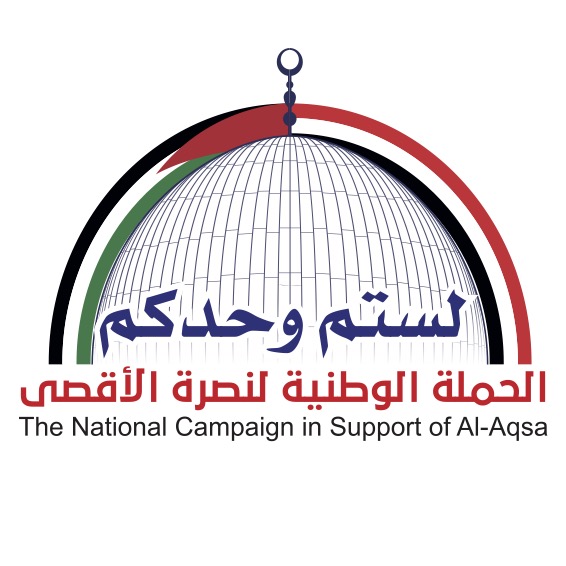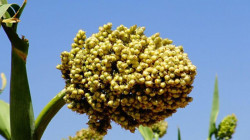SANAA, Feb. 18(Saba) - Despite the difficult terrain of Yemen and the lack of rivers and water scarcity, ancient Yemenis were able to create an irrigation system that was less than the old world, devised unique ways to conserve water, grow various crops, export them to different parts of the ancient world, and transform the arid desert in southern Arabia. To agricultural oases, described by the Holy Koran as paradise, and described Yemen as a good town, in saying: " There was for [the tribe of] Saba' in their dwelling place a sign: two [fields of] gardens on the right and on the left. [They were told], "Eat from the provisions of your Lord and be grateful to Him. A good land [have you], and a forgiving Lord."," a sign that it is an agricultural land of unparalleled glory in the world.
The martyr Mr. Hussein al-Houthi realized early on, the great importance of the agricultural sector in promoting resilience, stability and victory, and the need to free from the constraints of enemies, and to rely on ourselves in the cultivation of the land, stressing that the nation cannot defend its religion, and cannot defend itself, and it is still lacking its necessary sustenance, which is based on agriculture, which depends on imports from abroad, and therefore it has become necessary to pay attention to agriculture in the field of supporting Islam, the nation is threatened every day because it's food from under the feet of its enemies, from the crumbs of their tables, so it must be self-sufficient with regard to with her essentials.
In more than one speech, the leader of the revolution, Mr. Abdul Malik al-Houthi, also urged the need to move towards agriculture and domestic food production, to reduce external imports and achieve self-sufficiency, especially in these circumstances in which the Yemeni people are suffering as a result of the aggression and economic blockade.
The importance of reactivating the agricultural front is magnified as the countries of aggression continue to continue the blockade applied for the sixth year in a row, and prevent the entry of about 90 percent of imports, food and grains of all kinds, after the destruction of all the capabilities of life in Yemen, in the hope that the Hebrew aggression in the economic paper achieves what it has failed to achieve militarily and politically, in an absurd attempt to discourage Yemenis and to kneel and dominate their land and capabilities, and they are interested in doing so.
This is why the General Foundation for grain production and development was established in 2016 by a decision of the Revolutionary Committee, as a necessity imposed by the disastrous repercussions of the aggression on Yemen, with the aim of raising the rate of self-sufficiency to secure food, because it is linked to the independence of the Yemeni decision and the liberation of the Yemeni will, and to be a front Advanced in the face of The Hebrew aggression, and the annulment of the plans of kneeling, humiliation and starvation, which continue for the sixth year without mercy or conscience, in the shadow of a shameful international silence.
Grain is a strategic crop associated with the sovereignty of states, and their decisions are liberalized, so Yemenis will only be able to gain their freedom and own their sovereign decision if they can produce their food needs.
Yemen is currently suffering from a large food gap in the national economy, in major grain crops, especially wheat and maize, which makes the issue of food security one of the most important priorities to be taken care of, and always work to narrow and reduce that gap, to achieve self-sufficiency, because Those who do not have their food do not have their own decision, and those who do not have their own decision sit in their own right.
* Agriculture in brief
Agriculture during the presidency of martyr Ibrahim al-Hamdi witnessed the last years of its glory and prosperity, and constituted the most important source of national income, the backbone of the national economy, and the largest economic activity in the absorption of the labor force, and the proportion of workers in it more than 70% of the total labor force in Yemen, where he lived in Rural areas are more than 90% of the population, and the contribution of the agricultural sector to GDP during the period 1972-1974 was between 50 and 55%, but it soon declined after the departure of Al-Hamdi, to reach in1980-1986 to 30%, and the agricultural pattern in northern Yemen during that period was characterized by sovereignty Grain crops.
Grain cultivation accounted for 80 percent of Yemen's cultivated land, and sorghum is the main crop, with maize and millet production in 1975-1976 amounting to about 785,000 tones, equivalent to 78% of total cereal production in the same year.
For the first time in Yemen's modern history, Yemen, under the martyr al-Hamdi, achieved self-sufficiency in plant and animal production, and in 1974 al-Hamdi issued a gold coin, which was engraved with the words: "To increase the production of food crops."
At the time, the Government considered agriculture, the primary sector that was not affected by fluctuations and external factors, as in other economic sources such as oil, tourism and others.
The territory of the Republic of Yemen is distributed as follows:
- Agriculturally untapped land (desert or city) 300,000 square kilometers, 54.05 per cent.
- Pastures 22,600 square kilometers, 40.72 per cent.
- Forests 1500 square kilometers, 2.70 percent.
- Cultivated land 1.202 square kilometers / 1484852 hectares, 2.04 percent.
According to the 2017 annual census book, the total area under cultivation in Yemen is 1,084.008 million hectares, down from 500,000 hectares under Al-Hamdi, some of which have ceased to be cultivated, some of which have disappeared as a result of urbanization, flood-offs or desertification. This reflects the scale of the disaster related to the future of food security in Yemen, in light of the large gap between the growth of the agricultural sector and the increase in population growth, which is one of the largest in the world, which poses an increasing risk to the stability of Yemen as a result of increased hunger, widespread poverty and high percentage Unemployment.
Many factors caused this terrible decline in the agricultural sector after al-Hamdi's departure, the most important of which are:
- Increasing population growth rates.
- State neglect of the agricultural sector.
- The state liquidates some of its institutions supporting agriculture, exposing the majority of them to systematic corruption, and reducing the tasks of some, in return for the growing relative importance of other sectors such as trade, transport, works and services.
- The varying and poor use of modern farming inputs such as fertilizers and improved seeds, and poor utilization of modern agricultural machinery.
- "Young" peasants are increasingly migrating from the countryside to cities and abroad in search of jobs.
- The generation of experienced peasants vanished.
- Lack of water resources, drought, increased desertification and accelerated climate change.
- Instability and unrest in Yemen have increased since 2011.
The catastrophic repercussions of the banned weapons used by the Hebrew Aggression coalition on the agricultural sector, which caused:
- The soil is stripped of the characteristics of agricultural production, both in areas that have been directly bombarded and in areas of rainfall, and therefore the soil needs for a long period of time, in order to restore these properties.
- Pollution of water from agricultural wells, dams, barriers and water stocks in general.
The agricultural sector contributes about 5.14% of gdp in 2015, while Yemen imports 3,500,000 tons of grain annually for more than $2 billion, wheat accounts for 40% of imported products and 37% of food and industrial materials, while agricultural varieties such as legumes and others account for 10%, while the number of Imported agricultural varieties have 896 agricultural varieties, which represent 90 percent of agricultural needs, although Yemen is an agricultural country with a history in this regard.
In total, Yemen consumed about 3.5 million tons of grain, of which only 100,000 were produced, or 2.8%, which is very small, taking into account the continued growth of population growth of more than 3% per year.
According to 2017 statistics, Yemen imported about 3 million tons of wheat, while domestic production is only 7 percent.
The most prominent agricultural crops in Yemen include millet, corn, wheat, mango, bananas, papaya, melons, pomegranates, oranges, lemons, pears, apples, peaches, grapes and coffee.
* General Corporation for Grain Production and Development
The organization operates on two tracks:
- Cultivating large areas of "model farms".
- Development of agriculturally produced households in the field of grain and provision of production supplies, both for the productive groups of the foundation and for agricultural farmers.
Its work focuses mainly on Tihama, Jawf and the northern and central highlands, through direct land cultivation and support for farmers, where suitable land is leased, reclaimed and cultivated, in order to provide a model for model farms, using modern agricultural mechanization, to assist farmer in improving production and reducing costs, this model is circulated to farmers to apply to their farms.
And the embodiment of the project launched by the martyr president Saleh al-Samad" A hand protects and another hand builds" In 2018, the Foundation adopted the Martyr Saleh Al-Samad Grain Production Award, an annual award for the best scientific research in the field of grain production, and the best farmer achieving high productivity from the main grain crops "maize" Shamia, sorghum, millet, wheat, barley, in order to create a spirit of competition among farmers in the expansion of grain cultivation, which is at the level of directorates and at the level of the Republic, and its prizes are valuable and meet the needs of the farmer himself, and at the same time the Foundation will contribute through it to empower farmers And help them to continue to grow grain crops in various agricultural areas.
Goals:
The Foundation seeks to achieve a package of objectives, including:
First: The overall strategic objective:
- Achieving food security.
- Ensuring self-sufficiency in grain crops.
Second: Practical objectives:
- Expansion of agricultural areas.
- Gradually increasing cereal production, to achieve self-sufficiency of grains in general and wheat in particular, according to short, medium and long-term plans.
- Reducing production costs, so that the domestic product can compete with imported grain prices, and gradually reduce imported quantities, and there will be a reverse proportionality between locally produced quantities and imported quantities.
- Supporting and encouraging farmers, developing production supplies, introducing modern agricultural techniques, and developing grain-producing communities.
- Encourage and support agricultural research aimed at developing the productivity of rain and irrigated crops.
- Improving marketing and developing crop storage capacity.
Achievements:
The Foundation adopts a mechanism for financing and supporting farmers with improved seeds and tillage, as opposed to grain provided by the farmer to the foundation at the end of the year.
Despite modest possibilities, the Foundation has had a clear mark in restoring life to the agricultural sector and completing a series of promising projects in a record period, including:
- Funding 6,500 farmers with major production requirements in 9 provinces, spread over 39 districts, planting 450 hectares of wheat and maize, and implementing a number of projects to reduce production costs in Jawf governorate, by supporting and financing farmers with improved divers, seeds and tillage.
The implementation process included the districts of al-Mutma, Al-Zaher and Al-Maton in Jawf, the districts of Zabid, Al-Jarahi, Beit al-Faqih, Bagil, Al-Munir, Al-Munira, al-Dhahi, al-Qanawis in Hodeidah, and the districts of Abs, Bani Qais, Mustaba, Haradh, Bakil al-Mir in Hajjah, and the northern highlands of Sana'a, Dhamar, Mahweit, Amran, and the Central Highlands in ibb and Al-Bayda provinces, and included of Taiz province last year.
- 7% of the market's need for cereals, or 7% of people's need for cereals, is a record achievement in a short period of time.
- Launching an awareness campaign to reduce urban sprawl on agricultural land in many agricultural provinces such as Amran, Sana'a and Dhamar, and the work of advisory panels in agricultural bottoms, and seeking to pass legal legislation to stop urban sprawl on agricultural land.
- Distribution of more than 45 manual tillage in 9 provinces, in each province four or five directorates, received the form for nomination and analysis and a festival in each province, to deliver the ploughs and prepare for the delivery of the prize in each province.
- Agreement that the foundation will establish markets for the purchase and sale of grain crops at subsidized prices.
- The establishment of 450 production groups, consisting of a total of 30 farmers, for which it elects a president and 4 members and assistants, and the foundation, is tasked with marketing production, linking the market and farmer, and introducing the importance of the local product and its nutritional value.
The aim of the group is to identify the needs of farmers and to organize their efforts and potential for grain production.
The groups cover 37 directorates, spread over 9 provinces, and include 11,409 farmers, with a total acquisition of 49,000 hectares, in which various types of grains/wheat, barley, sorghum, sorghum, millet; lentils, beans, beans, etc. are cultivated.
Iman al-Mutawakel

| more of (Reports) |



